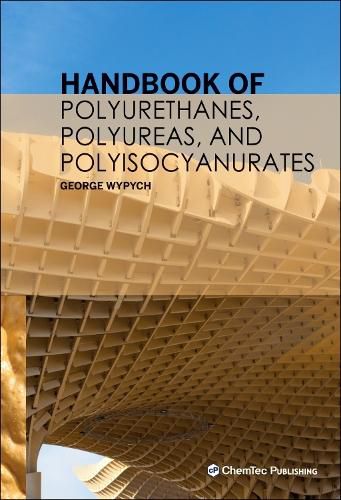Readings Newsletter
Become a Readings Member to make your shopping experience even easier.
Sign in or sign up for free!
You’re not far away from qualifying for FREE standard shipping within Australia
You’ve qualified for FREE standard shipping within Australia
The cart is loading…






Handbook of Polyurethanes, Polyureas, and Polyisocyanurates offers a comprehensive exploration of the chemistry and technology behind polyurethane materials. The book begins by examining the essential building blocks for polyurethane synthesis, focusing on the variety of isocyanates and polyols and their unique chemical characteristics. It further delves into the crucial roles of amines, solvents, catalysts, and other additives that drive and refine the polymerization process. By detailing common synthesis methods, mechanisms of catalysis, and factors that affect reaction rates, this handbook serves as a practical guide for scientists and engineers in the field. Beyond synthesis, the book addresses the structures of both linear and crosslinked polyurethanes, linking these molecular configurations to the resulting physical and chemical properties. It outlines standard analytical techniques for evaluating polyurethane quality, covering physical-mechanical properties such as elasticity, tensile strength, and thermal stability.
$9.00 standard shipping within Australia
FREE standard shipping within Australia for orders over $100.00
Express & International shipping calculated at checkout
Handbook of Polyurethanes, Polyureas, and Polyisocyanurates offers a comprehensive exploration of the chemistry and technology behind polyurethane materials. The book begins by examining the essential building blocks for polyurethane synthesis, focusing on the variety of isocyanates and polyols and their unique chemical characteristics. It further delves into the crucial roles of amines, solvents, catalysts, and other additives that drive and refine the polymerization process. By detailing common synthesis methods, mechanisms of catalysis, and factors that affect reaction rates, this handbook serves as a practical guide for scientists and engineers in the field. Beyond synthesis, the book addresses the structures of both linear and crosslinked polyurethanes, linking these molecular configurations to the resulting physical and chemical properties. It outlines standard analytical techniques for evaluating polyurethane quality, covering physical-mechanical properties such as elasticity, tensile strength, and thermal stability.